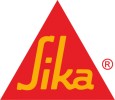Filter interviews by
Eternis Fine Chemicals Executive Production Interview Questions and Answers
Eternis Fine Chemicals Executive Production Interview Experiences
1 interview found
I applied via Recruitment Consulltant and was interviewed before Jun 2021. There was 1 interview round.
(1 Question)
- Q1. Unit operation,process safety details technical terms of chemical engineering
Interview Preparation Tips
Top trending discussions






Interview questions from similar companies

Executive Production Interview Questions & Answers
Anupam Rasayan Indiaposted on 20 Nov 2023
I applied via Recruitment Consulltant and was interviewed before Nov 2022. There were 2 interview rounds.

(2 Questions)
- Q1. Pump head calculation
- Q2. Pressure Swing vacuum distillation

Executive Production Interview Questions & Answers
Cohizon Life Sciences Limitedposted on 8 Apr 2025
I appeared for an interview in Mar 2025, where I was asked the following questions.
- Q1. Company experience
- Q2. Company satisfaction

Production Officer Interview Questions & Answers
National Organic Chemical Industriesposted on 26 Jan 2021
I applied via Recruitment Consultant and was interviewed in Jan 2021. There were 3 interview rounds.
Interview Questionnaire
1 Question
- Q1. Generally perivous company experience related and technical related or safety related.
Interview Preparation Tips

I applied via Walk-in and was interviewed in May 2024. There was 1 interview round.
(2 Questions)
- Q1. Type of reactor
- Ans.
There are various types of reactors used in production processes, such as batch reactors, continuous stirred-tank reactors, and plug flow reactors.
Batch reactors are used for small-scale production and allow for easy control of reaction conditions.
Continuous stirred-tank reactors are used for continuous production and have good mixing capabilities.
Plug flow reactors are used for reactions that require a specific reside...
- Q2. Types of distillation column
- Ans.
Types of distillation columns include batch, continuous, fractional, and steam distillation.
Batch distillation: Used for small-scale production and involves separating components based on boiling points.
Continuous distillation: Used for large-scale production and involves a continuous feed of mixture and product removal.
Fractional distillation: Used to separate components with closer boiling points by creating multiple...

Production Officer Interview Questions & Answers
National Organic Chemical Industriesposted on 31 Oct 2024
I applied via Referral and was interviewed before Oct 2023. There was 1 interview round.
(2 Questions)
- Q1. What are difference between flash point and fire point???
- Ans.
Flash point is the temperature at which a substance gives off enough vapor to ignite momentarily, while fire point is the temperature at which a substance will continue to burn after ignition.
Flash point is the temperature at which a substance can ignite momentarily when exposed to an ignition source.
Fire point is the temperature at which a substance will continue to burn after ignition.
Flash point is typically lower t...
- Q2. What is centrifugal pump mechanism???
- Ans.
Centrifugal pump mechanism involves the conversion of mechanical energy into kinetic energy to increase the fluid's velocity and pressure.
Centrifugal pump consists of an impeller that rotates to create centrifugal force.
Fluid enters the pump through the center of the impeller and is flung outwards by centrifugal force.
The fluid gains kinetic energy and pressure as it moves through the pump.
The fluid is then discharged ...

(2 Questions)
- Q1. As per experience and Study related all Questions.
- Q2. Nothing else all regular basis of questions.
Interview Preparation Tips

Production Officer Interview Questions & Answers
Oriental Aromaticsposted on 18 Jun 2024
I applied via Referral and was interviewed before Jun 2023. There was 1 interview round.
(2 Questions)
- Q1. How to create vacuum in column
- Ans.
Vacuum in a column can be created by using a vacuum pump to remove air and other gases from the column.
Use a vacuum pump to remove air and other gases from the column
Ensure all connections are airtight to maintain the vacuum
Monitor the vacuum level regularly to ensure it is maintained
Adjust the vacuum pump settings as needed to achieve the desired vacuum level
- Q2. How steam ejector work
- Ans.
Steam ejectors work by using high-pressure steam to create a vacuum for removing gases or vapors from a system.
Steam is expanded through a nozzle to increase its velocity
The high-velocity steam entrains the gases or vapors to be removed
The mixture of steam and gases is then condensed and separated in a diffuser
The condensed steam is usually discharged to a condenser or a drain
Interview Preparation Tips

Production Officer Interview Questions & Answers
National Organic Chemical Industriesposted on 12 Apr 2024
I applied via Referral and was interviewed before Apr 2023. There was 1 interview round.
(1 Question)
- Q1. What is lel & uel of hydrogen?
- Ans.
LEL (Lower Explosive Limit) and UEL (Upper Explosive Limit) are the concentration range of a gas in air that can result in an explosion if ignited.
LEL of hydrogen is 4% in air
UEL of hydrogen is 75% in air
Concentrations below LEL are too lean to burn, while concentrations above UEL are too rich to burn
Interview Preparation Tips

Production Officer Interview Questions & Answers
Cohizon Life Sciences Limitedposted on 14 Dec 2020
Interview Questionnaire
1 Question
- Q1. About My Process and What safety system provide in Your Process
Eternis Fine Chemicals Interview FAQs
Tell us how to improve this page.
Eternis Fine Chemicals Interviews By Designations
- Eternis Fine Chemicals Production Officer Interview Questions
- Eternis Fine Chemicals Executive Production Interview Questions
- Eternis Fine Chemicals Manufacturing Officer Interview Questions
- Eternis Fine Chemicals QC Officer Interview Questions
- Eternis Fine Chemicals Project Supervisor Interview Questions
- Eternis Fine Chemicals Processing Executive Interview Questions
- Eternis Fine Chemicals Production Associate Interview Questions
- Eternis Fine Chemicals Instrumentation Officer Interview Questions
- Show more
Interview Questions for Popular Designations
- Production Engineer Interview Questions
- Production Supervisor Interview Questions
- Production Manager Interview Questions
- Production Officer Interview Questions
- Production Interview Questions
- Senior Production Engineer Interview Questions
- Production Chemist Interview Questions
- Production Operator Interview Questions
- Show more
Interview Questions from Similar Companies
Eternis Fine Chemicals Executive Production Reviews and Ratings
based on 3 reviews
Rating in categories
|
Production Officer
127
salaries
| ₹3 L/yr - ₹7 L/yr |
|
Assistant Manager
28
salaries
| ₹7.3 L/yr - ₹18.5 L/yr |
|
Officer
26
salaries
| ₹2.5 L/yr - ₹6.1 L/yr |
|
Production Associate
22
salaries
| ₹1 L/yr - ₹4.8 L/yr |
|
Process Engineer
20
salaries
| ₹4.5 L/yr - ₹8.5 L/yr |

Sheenlac Paints

Deepak Fertilisers and Petrochemicals

Laxmi Organic Industries

Meghmani Organics
- Home >
- Interviews >
- Eternis Fine Chemicals Interview Questions >
- Eternis Fine Chemicals Executive Production Interview Questions








